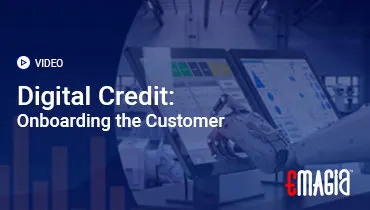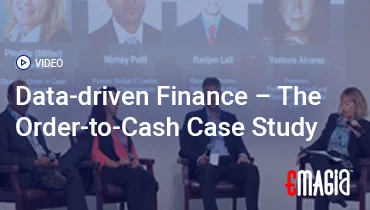Introduction
A debt collection letter is a formal communication sent by a creditor or debt collection agency to remind a debtor of an outstanding obligation. It outlines the amount owed, the due date, and consequences of non-payment, urging prompt resolution. These letters typically escalate in severity if debts remain unpaid, potentially leading to legal action.
In this comprehensive guide, we’ll explore the intricacies of debt collection letters, their components, legal considerations, and best practices to ensure effective debt recovery.
Understanding Debt Collection Letters
A debt collection letter serves as a formal reminder to a debtor about an unpaid obligation. It’s a critical tool in the accounts receivable process, aiming to prompt payment while maintaining professional relationships.
Purpose of Debt Collection Letters
- Reminder: Notify the debtor of the outstanding amount.
- Documentation: Provide a written record of the debt and communication.
- Legal Precursor: Serve as evidence in potential legal proceedings.
Types of Debt Collection Letters
Debt collection letters can vary based on the stage of the collection process:
1. Friendly Reminder
Sent shortly after the due date, this letter serves as a gentle nudge to the debtor.
2. First Collection Letter
A more formal notice indicating the amount due and requesting immediate payment.
3. Second Collection Letter
Emphasizes the urgency and may mention potential consequences of continued non-payment.
4. Final Demand Letter
The last step before legal action, clearly stating the intent to escalate if payment isn’t received.
Key Components of a Debt Collection Letter
An effective debt collection letter should include:
1. Creditor’s Information
Include the name, address, and contact details of the creditor or collection agency.
2. Debtor’s Information
Clearly state the debtor’s name and address.
3. Account Details
Provide specifics about the debt, including:
- Invoice number
- Original amount
- Interest or late fees
- Total amount due
- Due date
4. Payment Instructions
Offer clear guidance on how to make the payment, including accepted methods and deadlines.
5. Consequences of Non-Payment
Outline potential actions, such as:
- Reporting to credit bureaus
- Legal proceedings
- Engaging a collection agency
6. Contact Information
Provide a point of contact for the debtor to discuss the matter or seek clarification.
Legal Considerations and Compliance
Debt collection practices are governed by various laws to protect both creditors and debtors.
Fair Debt Collection Practices Act (FDCPA)
In the U.S., the FDCPA prohibits:
- Harassment or abusive practices
- Misrepresentation of the debt
- Unfair practices
Collectors must also:
- Provide validation of the debt upon request
- Cease communication upon written request
Debt Validation
Debtors have the right to request verification of the debt. Upon such a request, collectors must:
- Provide details of the debt
- Cease collection efforts until validation is provided
Note: Laws may vary by jurisdiction; always consult local regulations.
Best Practices for Drafting Debt Collection Letters
To enhance the effectiveness of your debt collection letters:
- Be Clear and Concise: Avoid ambiguous language.
- Maintain Professionalism: Use a respectful tone.
- Personalize the Letter: Address the debtor by name and reference specific account details.
- Set Clear Deadlines: Specify exact dates for payment.
- Offer Payment Options: Provide multiple methods to facilitate payment.
- Document All Communications: Keep records for legal and reference purposes.
Common Mistakes to Avoid
When drafting debt collection letters, steer clear of:
- Threatening Language: Avoid intimidation or harassment.
- Vague Terms: Be specific about amounts and deadlines.
- Ignoring Legal Requirements: Ensure compliance with relevant laws.
- Overlooking Debtor’s Rights: Acknowledge and respect their rights to dispute or validate the debt.
📄 Sample Debt Collection Letter Templates
Effective Debt Collection Letter Examples for Every Stage of the Process
Creating the right tone and structure in your debt collection letter can significantly improve response rates. Below are professionally crafted templates for different stages of the collection cycle—from initial reminders to final legal notices. These can be customized for your business needs while ensuring compliance and professionalism.
🟢 1. First Payment Reminder Letter
This gentle reminder is typically sent shortly after a payment becomes overdue. It maintains a polite tone, assumes the delay is unintentional, and encourages prompt resolution.
Subject: Friendly Reminder: Payment Due for Invoice #[Invoice Number]
Template:
Dear [Customer Name],
We hope this message finds you well. Our records show that payment for invoice #[Invoice Number] dated [Date] in the amount of [Amount Due] is past due.
Please arrange payment at your earliest convenience or reach out if you have any questions.
Payment Details:
Amount Due: [Amount]
Due Date: [Original Due Date]Thank you for your attention.
Sincerely,
[Your Name]
[Company Name]
[Contact Information]
🟡 2. Second Collection Letter – Follow-Up Notice
This letter adds a sense of urgency while remaining courteous. It references previous communication and reinforces the need for action.
Subject: Urgent: Second Notice – Overdue Invoice #[Invoice Number]
Template:
Dear [Customer Name],
This is a follow-up to our previous reminder regarding the overdue invoice #[Invoice Number]. As of today, the payment of [Amount] remains unpaid.
We kindly request that you address this matter within the next 7 days to avoid any disruption to your account or services.
Please contact us if you need to discuss payment arrangements.
Sincerely,
[Your Name]
[Company Name]
🔴 3. Final Demand for Payment Letter
This letter signals the last opportunity to settle the account before potential escalation to legal or collection actions.
Subject: Final Demand for Payment – Immediate Action Required
Template:
Dear [Customer Name],
Despite multiple reminders, payment for invoice #[Invoice Number] in the amount of [Amount] remains outstanding. This letter serves as a final demand for payment.
Unless we receive payment within 5 business days, we will be forced to consider further action, which may include referring the account to a collection agency or pursuing legal remedies.
We urge you to treat this matter with urgency.
Sincerely,
[Your Name]
[Company Name]
[Legal or Collections Department Contact]
⚖️ 4. Legal Action Warning Letter (If Applicable)
Used in cases where all other attempts have failed and legal escalation is likely. This letter must comply with legal guidelines.
Subject: Legal Notification Regarding Unpaid Debt – Invoice #[Invoice Number]
Template:
Dear [Customer Name],
As previously communicated, your account with invoice #[Invoice Number] remains delinquent in the amount of [Amount].
This is to inform you that we are preparing to take legal action to recover the outstanding balance. You may still avoid legal proceedings by settling the debt within [X] days.
Should you have any questions or need to discuss a settlement, contact us immediately.
Regards,
[Your Name]
[Company Name]
[Legal Department]
How Emagia Enhances Debt Collection Processes
Boost Collection Efficiency with Emagia’s AI-Powered Solutions
Emagia stands at the forefront of digital transformation in order-to-cash (O2C) operations. Here’s how Emagia revolutionizes the debt collection letter process for enterprises:
1. AI-Driven Automation
- Automatically generate, personalize, and send debt collection letters based on payment behavior and account status.
- Save time and reduce human errors with rule-based letter scheduling.
2. Predictive Analytics
- Identify at-risk accounts using AI to prioritize collections effectively.
- Improve decision-making by forecasting payment likelihood.
3. Omni-Channel Communication
- Deliver debt collection messages via email, SMS, postal mail, or integrated portals.
- Boost debtor engagement through timely, multi-format reminders.
4. Workflow Customization
- Tailor collection letter cadence based on aging buckets or customer segments.
- Escalate seamlessly from gentle reminders to final notices and legal letters.
5. Compliance Management
- Maintain FDCPA, GDPR, and regional compliance with built-in legal frameworks.
- Automatically include required disclosures and opt-out instructions.
6. Performance Insights & Dashboards
- Track letter effectiveness, open rates, and conversion metrics in real-time.
- Refine strategies based on debtor response patterns.
7. Integration with ERP & CRM Systems
- Connects with SAP, Oracle, Salesforce, and other enterprise platforms.
- Synchronize customer data for consistent messaging and collection history.
📌 Frequently Asked Questions (FAQs)
🔹 What is a debt collection letter?
A debt collection letter is a formal notice from a creditor or agency requesting repayment of an overdue balance. It includes details of the debt and consequences of non-payment.
🔹 Is a debt collection letter legally binding?
While the letter itself isn’t a legal judgment, it often forms the first step in legal debt recovery. Repeated letters can establish a record useful in court.
🔹 Can I ignore a debt collection letter?
Ignoring a debt collection letter may lead to increased pressure, negative credit reporting, or legal action. It’s best to respond or negotiate terms.
🔹 How do I dispute a debt collection letter?
You have the right to dispute the claim by requesting debt validation within 30 days of receiving the first letter, as outlined under the FDCPA in the U.S.
🔹 What happens after a final demand letter?
If payment isn’t made or a resolution isn’t reached, the creditor may escalate to legal proceedings, such as filing a claim in small claims or civil court.
🔹 Can debt collection letters impact my credit score?
Yes, especially if the account is reported to credit bureaus. Prompt resolution helps avoid long-term negative effects on your credit report.
🔹 How often can a creditor send a collection letter?
There are no strict limits, but frequent or harassing contact may violate consumer protection laws like the FDCPA.
🔹 What should I do if I receive a debt collection letter in error?
Contact the sender immediately to dispute it and request validation. Provide documentation if the debt isn’t yours or has already been paid.



